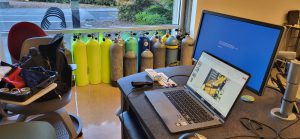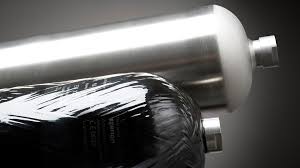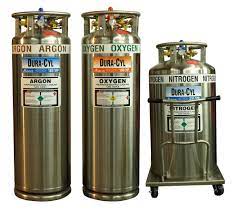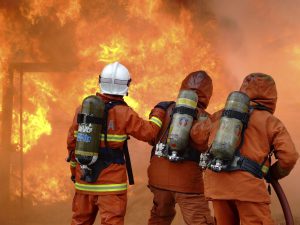
Cylinder Inspection Training: Why a Maintained Cylinder Is a Happy Cylinder
Uncover the importance of gas cylinder inspections and training. Dive deep into ensuring safety, boosting efficiency, and prolonging cylinder life.
Why you should invest in visual inspection training
There are many reasons to invest in formal visual inspection training. The best reason is to keep everyone safe from a cylinder failing while under pressure, or a compressor failing to work properly. But there are other reasons, even financial reasons, to invest in such training. A properly trained individual will understand the allowable damage on a specific style of cylinder, they will understand the workings and proper operation of a compressor and they can help develop safe filling procedures for a facility. Persons who have been around for a long time, and have experience in these areas is great. But, when was the last time they had a refresh course, or listened to new ideas or developed new techniques? Taking a formal inspection training can help a novice understand the nuances and dangers involved, but can also give new ideas and techniques to the seasoned veteran.
Here are but a few reasons to take a formal training program:
Protect your investment in the equipment you purchased (cylinder / valves and compressors)
A company or person has invested hundreds, thousands or millions of dollars in the cylinders they use recreationally or for business. The cylinders are quality pieces of equipment that can withstand specific uses and or environments. There are times that the uses or environments exceed the design of the cylinder. The cylinder will then be exposed to factors that may weaken it due to corrosion and stress. Many of these conditions can be reduced or eliminated as long as the cylinder is properly maintained.
An example of such a circumstance is a steel storage cylinder sitting on concrete with no barrier. The bottom of the cylinder is in direct contact with an environment where it is exposed to moisture. If this condition goes unchecked, it could lead to damage which may render the cylinder useless due to the level of corrosion. With proper training a person charged with the maintenance of the cylinder may prevent such an occurrence and keep that cylinder in service for its intended service life.
When a cylinder becomes damaged it must be determined if the damage exceeds an allowable limit. Simply having damage does not render a cylinder unsafe to use. Most cylinders are designed with a certain amount of damage expected and are designed to withstand that damage. The person maintaining the cylinder must know the allowable limits and understand how to gauge the amount of damage. When looking inside a cylinder, and corrosion is detected, how can the inspector measure the damage and make an assessment? Proper training will give the inspector hands on knowledge with a trained professional.
The same principal holds true to the valve on the cylinder. The valve has moving parts and components designed to retain high pressure gases. Constant use as well as infrequent use can have an affect whether the valve is working correctly or not. Over use or overtightening the valve can affect the high pressure seating material. No use, with the addition of contaminates, may cause the valve to seize or not work as designed. With proper maintenance and care a cylinder valve should have a long serviceable life. Proper training can cover common issues and go over proper maintenance tips to ensure a long service life.
If a person or organization has invested in a compressor, it is likely one of the most expensive pieces of equipment in its high pressure arsenal. The compressor is a complicated piece of machinery with numerous moving parts that must work in unison to achieve its rated service pressure. Small particles, not enough oil, too much oil or wearing seals can cause very expensive, unexpected repair bills. The compressor must be maintained, and parts replaced. But this can become a scheduled, budgeted maintenance procedure. It is when the compressor is neglected or ignored that the maintenance costs become problematic. Proper training can help the staff develop a maintenance schedule and keep the compressor running as intended.
With a compressor working properly the compressed gas needs to be filled into a storage cylinder. How can this be accomplished safely? The compressor will likely handle pressure well above 3000 PSI (200 BAR). Even much lower levels of pressure, in the hundreds, is enough to go through skin and cause life threatening injuries. The person operating a high pressure fill station must understand these risks. The person filling a cylinder is also the most likely person to notice a safety issue with a storage cylinder and prevent a problem by not using a specific cylinder until it is properly inspected and found safe to use. The fill station can be one of the most dangerous assignments and that person needs proper training to keep themselves and the facility safe.
Keep yourself safe – hazards from noise to explosions
Working around cylinders and compressors exposes the person to noise and other dangers such as air embolisms and possible failures of the valves or ruptures of the cylinders. Care and maintenance of the cylinders and machinery is one step in preventing these issues. But a more critical step is training the person or employees to be safe around the hazards. Simple training tips, such as wearing hearing protection, how to properly move the cylinder, or how not to handle a valve, can go a long way in protecting a person and property. A formal training program can help an organization develop a proper and useful training program.
Compliance with some countries hazmat laws
Because the person or facility is dealing with compressors and cylinders, and there is a risk of rupture and damage, most areas and countries have rules in place to keep persons and property safe. Even if an area does not have a governing body, it should be up to the operator or owner to develop rules to keep themselves and everyone safe. Governing bodies may dictate what training is required or how frequently that training must be administered. However, if no rules exist for proper training, it is important for the organization or person to develop common sense training to keep persons and equipment safe. Taking a formal training course will help to make a person or organization compliant with local rules and regulations or give the organization an idea of proper training if no governing body exists.
There can be no guarantee that if a person takes formal training and follows all the rules, that an issue wont develop. However, if steps are taken to train persons in allowable damage, the repair of valves, the workings of a compressor and the dangers involved when dealing with high pressure gases, there is a greater chance to reduce the threat. A formal training program goes a long way in keeping a facility safe and preventing damage to the expensive equipment it has purchased and wants to maintain for a long service life.
Author – Don Kinney
About the author: Don Kinney is the owner of Cylinder Training Services (www.cylindertrainingservices.com). He started formally working with and filling cylinders in 1991. With his background in public safety he continued to gain knowledge in the field of high pressure cylinders and began to develop training programs. He has developed programs for PSI/PCI including; Eddy Current testing (2003), SCBA, Fire Department (2004) and their Fire Safety Seminar program (2004). He went on to develop his own visual inspection program covering cylinders, valves, cleaning and compressors in 2011. At this time he realized that inspectors needed a source for affordable and high quality inspection tools. His tools are designed for the high pressure cylinder industry, and assist them in determining damage and ensuring cylinders remain safe. In 2014 he developed an inspection program for International Training (ITI) where he published a manual and developed an on line training program. Don continues to dedicate himself to safety in the high pressure cylinder industries. He prides himself on understanding the client and their needs and coming up with a safe and useful training program designed to keep them safe and save them thousands of dollars.

I enjoy continuing to build the business based on safety since 1999. CTS focuses on the inspection of high pressure cylinders, the maintaining of the valves and basic maintenance of high pressure compressor systems. CTS stays current in techniques and tools to train both the new and novice employee. We publish articles, update training tools and have created an APP to assist during the inspection process.
#cylinder #safety #hazmat #training #cylinderinspectiontraining #cylindex

Uncover the importance of gas cylinder inspections and training. Dive deep into ensuring safety, boosting efficiency, and prolonging cylinder life.

Is your composite cylinder showing signs of wear? Discover when to seek a professional repair service in our comprehensive guide.

29 CFR 1910.101 intro Handling cryogenic cylinders involves working with extremely low-temperature gases that pose unique safety risks. To ensure the safe handling, storage, and transportation of these hazardous materials,

Introduction Firefighters encounter many risks while on duty, including hazardous materials and high pressure bottles. High pressure bottles are used for a variety of purposes in firefighting, including powering hydraulic